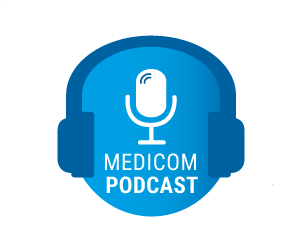https://doi.org/10.55788/194ffc74
In 2022, the FDA approved the phosphodiesterase 4 inhibitor roflumilast as a 0.3% water-based cream for the treatment of plaque psoriasis. The drug is also studied in other indications, such as seborrheic and atopic dermatitis, the latter most recently in the 2 presented phase 3 trials INTEGUMENT-I (NCT04773587) and INTEGUMENT-II (NCT04773600) [1–3].
A total of 1,337 patients were randomised to a vehicle or once-daily roflumilast 0.15% cream use over 4 weeks [1]. Participants had to be at least 6 years old and present with mild or moderate AD. Prof. Lawrence Eichenfield (University of California San Diego, CA, USA) underlined that almost 50% of the participants were paediatric patients between 5‒17 years of age. Around one-third of the participants in both trials presented a vIGA of 3 at baseline, mean Eczema Area and Severity Index (EASI) scores ranged from 9.8 to 10.3, and mean Worst Itch Numeric Rating Scale (WI-NRS) values ranged from 5.9 to 6.2.
At week 4, the proportions of participants achieving the primary endpoint of vIGA of clear or almost clear skin plus a 2-grade amelioration were significantly higher in the roflumilast arms than in the vehicle arms: 32.0% versus 15.5% (P<0.0001) and 28.9% versus 12.0% (P<0.0001) in INTEGEMUNT-I and INTEGEMUNT-II, respectively. Also, the EASI75 results were in favour of roflumilast cream (43.2% vs 22.0% for INTEGUMENT-I and 42.0% vs 19.7% for INTEGUMENT-II), with a significance level of P<0.0001 for both trials.
Since itch is an important symptom of AD, reaching a ≥4-point WI-NRS reduction was also evaluated as a secondary endpoint: in INTEGEMUNT-I, the ratios were 33.6% versus 20.7% at week 4 (P=0.0089) and in INTEGEMUNT-II were 30.2% versus 12.4% (P=0.0014) for roflumilast and vehicle, respectively. Prof. Eichenfield stressed that an itch improvement could be noted within 24 hours after the first application of roflumilast.
The most common treatment-emergent adverse effects were headache, nausea, application site pain, and nasopharyngitis, but none of these events occurred at a rate above 3.5% in the roflumilast groups. Thus, the investigators adjudicated an overall favourable safety and tolerability profile to the active treatment.
- Eichenfield L. Efficacy and safety of roflumilast cream 0.15% in adults and children aged ≥6 with mild to moderate atopic dermatitis in two phase 3 trials (INTEGUMENT-1 and INTEGUMENT-2). S025, AAD Annual Meeting 2023, 17–21 March, New Orleans, USA.
- Thurston Jr AW, et al. Am J Clin Dermatol. 2023;24:315–24.
- Jackson JM, et al. J Am Acad Dermatol. 2022;S0190-9622:03307–2.
Posted on
Previous Article
« IL-22 receptor blocker reduces itch and skin lesions in AD Next Article
Dupilumab: a viable option for atopic hand and foot eczema »
« IL-22 receptor blocker reduces itch and skin lesions in AD Next Article
Dupilumab: a viable option for atopic hand and foot eczema »
Table of Contents: AAD 2023
Featured articles
New Developments in Dermatology
Delgocitinib shows promise as topical therapy for chronic hand eczema
Vitiligo patients maintain re-pigmentation after ruxolitinib cream withdrawal
Nemolizumab decreases lesions and itch in prurigo nodularis
Lichen planus: a future indication for baricitinib?
Atopic Dermatitis: State of the Art
As-needed ruxolitinib shows successful long-term symptom control in AD
Dupilumab: a viable option for atopic hand and foot eczema
Topical roflumilast beneficial in atopic dermatitis
IL-22 receptor blocker reduces itch and skin lesions in AD
Psoriasis: New Developments
Switching to risankizumab successful in IL-17 inhibitor non-responders
Novel, selective TYK2 inhibitor shows promise for psoriasis
Hidradenitis Suppurativa: What You Need to Know
Izokibep shows remarkably high grades of clinical response in HS
Bimekizumab could be the new up-and-comer for HS treatment
Pearls of the Posters
Biologics in psoriasis: can they prevent joint involvement?
JAK inhibitor deuruxolitinib shows encouraging hair re-growth in alopecia areata
Biomarkers predicting response of different CSU treatments in children
Related Articles

April 4, 2023
AAD 2023 Highlights Podcast
© 2024 Medicom Medical Publishers. All rights reserved. Terms and Conditions | Privacy Policy

